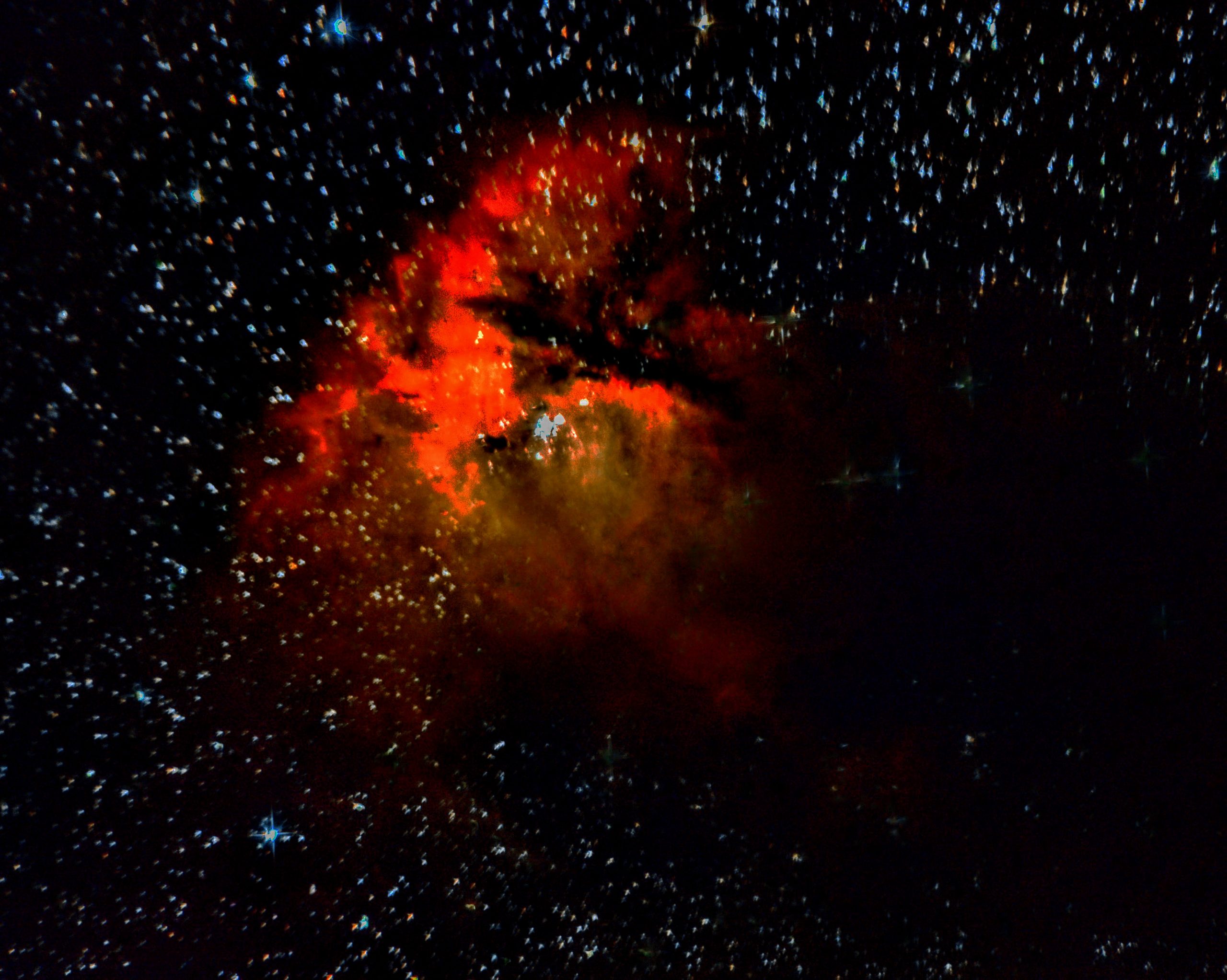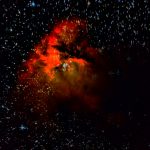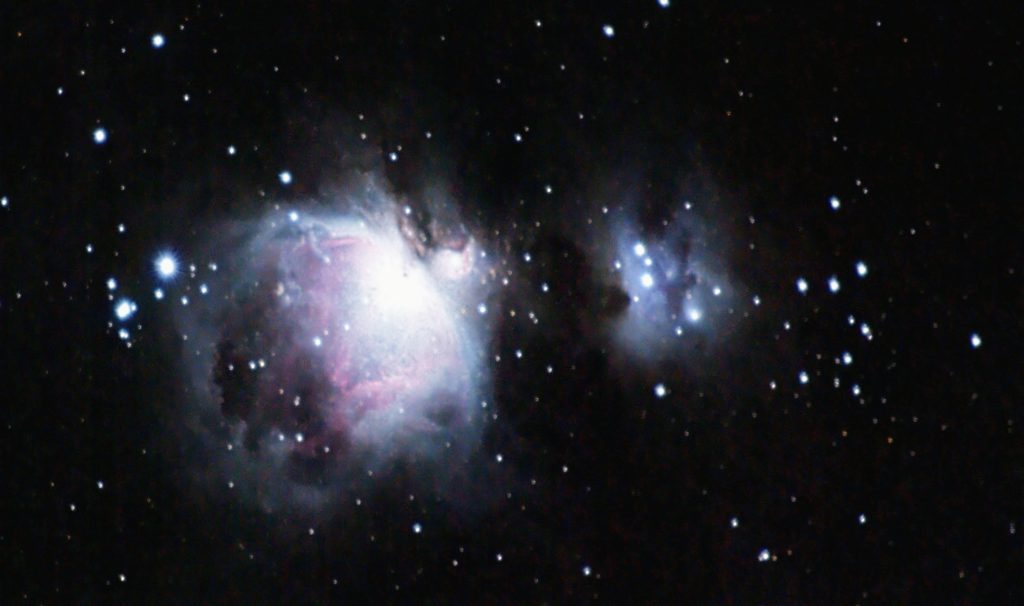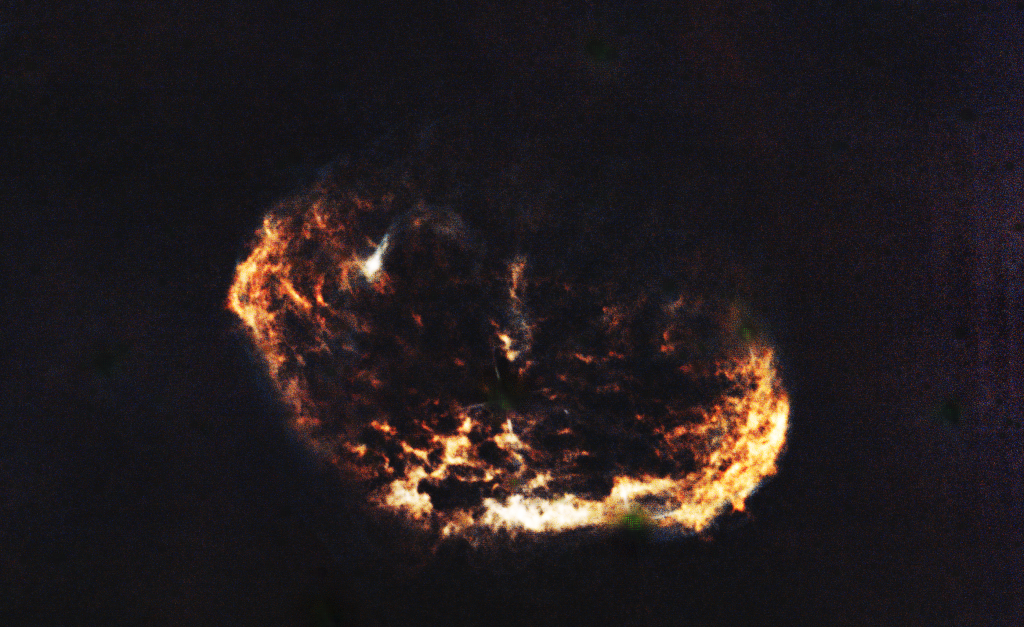The Pacman Nebula (NGC 281) is a bright emission nebula located in the constellation Cassiopeia, around 9,200 light-years away. Its name comes from its resemblance to the video game character Pac-Man, with a distinct “mouth-like” gap carved into the glowing gas.
This nebula is part of the Perseus Spiral Arm of the Milky Way and is home to the open star cluster IC 1590. Powerful young stars within the cluster ionize the surrounding hydrogen gas, creating the nebula’s characteristic red glow. Dark dust lanes add dramatic contrast, while Bok globules — dense clouds of gas and dust — are scattered throughout, serving as stellar nurseries for future stars.
For astrophotographers, the Pacman Nebula offers rich detail, colorful emission regions, and striking structures that reveal the ongoing story of star formation.
Key facts:
Object type: Emission nebula + open star cluster (IC 1590)
Constellation: Cassiopeia
Distance: ~9,200 light-years
Size: ~48 light-years across
Discovered by: Edward Emerson Barnard (1883)
Notable features: Bok globules, dust lanes, cluster ionizing hydrogen gas
Best observed in: Narrowband (Hα), visible in autumn from Northern Hemisphere
Taken with
- Skywatcher Explorer 200/1000
- Touptek 183 CA
- On Skywatcher EQ 5 Pro Mount
- Guide scope TS Optics 50/90
- Guide Camera Touptek 327C
- Sequencer NINA Advanced Sequencer.
- Guiding with PHD2
- Exposures 20 x 600 secs
- Stacking 13 Frames in ASTAP
- Streach and Beackground removeal with Siril & GraXpert
- Final Touch GIMP






